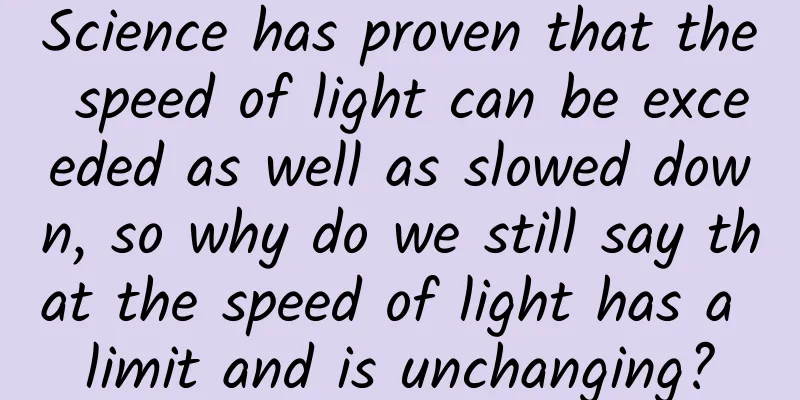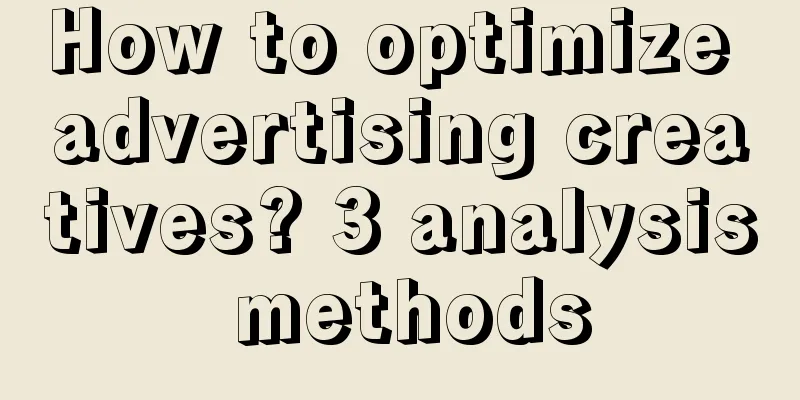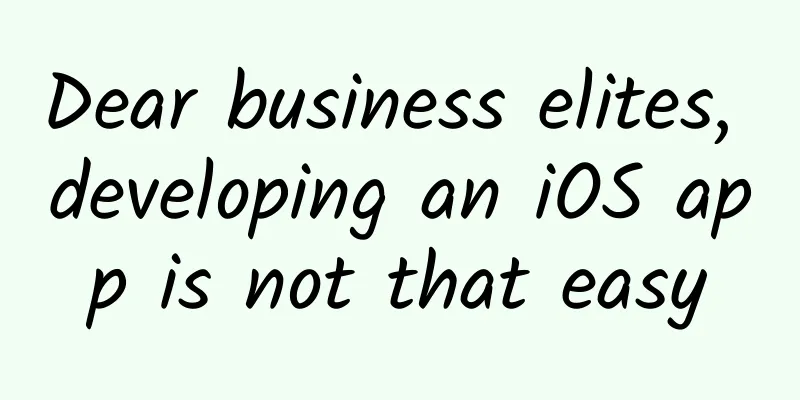Science has proven that the speed of light can be exceeded as well as slowed down, so why do we still say that the speed of light has a limit and is unchanging?

|
The speed of light is a constant in modern physics, with an exact value of 299,792,458 meters per second, or about 300,000 km/s. More than 100 years ago, Einstein proposed the two principles of the speed of light limit and the invariance of the speed of light in his special theory of relativity, which became the insurmountable ceiling of modern physics. The speed of light limit means that in our universe, no material movement can reach the speed of light, let alone exceed the speed of light, and not even the smallest particle is an exception; the constancy of the speed of light means that the speed of light in a vacuum is the same when observed in any reference frame and does not change depending on whether the observer is moving relative to the observer. For more than 100 years, this has become an iron law that no one can overturn. However, in some experiments, scientists often reveal that some matter moves faster than the speed of light, and the speed of light can slow down or even stop! What is going on? Let's find out together. The only confirmed phenomenon of matter moving faster than the speed of light A long time ago, people observed that transparent media such as water would emit a pale blue glow when exposed to radiation, but it was interpreted as fluorescence, even by Marie Curie. Former Soviet scientist Pavel Alexeevich Cherenkov decided to figure this out. In the 1930s, there were not even simple instruments to measure light intensity, so Cherenkov could only rely entirely on his own eyes for observation. In order to be sensitive to light intensity, he had to let his eyes adapt to the darkness for one hour every day before observing the faint glow that appeared in the medium. For several years, Cherenkov changed various media and repeated the experiment again and again. Finally, he found that this was not fluorescence, because fluorescence should be a spherical wave emitted in all directions, while the glow excited by this ray was a conical wave. Therefore, starting in 1934, he published a series of papers detailing the nature of this phenomenon, which people called "Cherenkov radiation." Later, his colleagues Ilya Mikhailovich Frank and Igor Yevgeniyevich Tamm also joined the research and finally concluded that this was a superluminal phenomenon! This is the first superluminal phenomenon discovered since Einstein issued the light speed ceiling, and it is also the only superluminal phenomenon of material movement so far! But why does superluminal phenomena produce a glow? Many scientists were fascinated by this phenomenon and tried to figure it out through various experiments. After several years of joint efforts, Cherenkov and his team finally figured out the problem. It turned out that when charged particles move faster than the speed of light in a medium, they emit a kind of electromagnetic radiation. This radiation is emitted in a cone, which is the source of Cherenkov radiation. The reason for this phenomenon is a bit like the sonic boom produced by a supersonic aircraft. When the aircraft speed reaches and exceeds the speed of sound, the sound waves cannot exceed the speed of the aircraft, so they cannot leave the aircraft body and accumulate, thus forming a cone-shaped shock wave. Similarly, when a charged particle moves faster than the speed of light, it will also produce photon vibrations, which appear as a blue radiation cone. The blue glow is the photon vibration phenomenon produced when the particle moves faster than the speed of light. After figuring out this principle, Cherenkov and his two colleagues jointly won and shared the 1958 Nobel Prize in Physics. This principle is of great significance. People use this principle to capture various high-energy charged particles from the universe. For example, after some high-energy charged particles enter the earth's atmosphere, some will exceed the speed of light and produce blue light. People have also built a large number of bubble chambers or pools on the earth or under the ice or underground to capture various particles. When these particles bombard the medium prepared by people, a superluminal effect will occur, leaving behind a glow and a path. In this way, these substances that are usually invisible can be made visible, allowing scientists to study them. The speed of light not only slows down, but also stops From the above, we can see that the speed of light is only the fastest in a vacuum, not necessarily in a medium. So how slow is the speed of light in a medium? Here is a rough parameter: compared with the speed of light in a vacuum, the speed of light can reach 99.97% in air, 77% in ice, only about 75% in water, about 73% in alcohol, about 67% in glass, and about 41% in diamond. In terms of the speed of light in these common media, the slowest is diamond, which is about 124,000 kilometers per second. This is still an unattainable speed in the macroscopic world of daily life. So, can it be slowed down? Scientists have been trying this for decades and have proven that not only can the speed of light be slowed down further and further, but it can also be stopped! In 1999, a team of scientists at Harvard University, led by Danish physicist Lene Vestergaard Hau, successfully slowed a beam of light to about 17 meters per second. In 2001, she was able to completely freeze a beam of light. What does it mean to freeze it? It means to stop! And after unbinding the beam of light, it can return to 300,000 kilometers per second. This is easier said than done, as it involves the theory of Bose-Einstein condensate. This theory holds that bosons will present a special state at extremely low temperatures close to absolute zero, namely Bose-Einstein condensate. Decades after this prediction was made, scientists finally prepared and realized this form of matter in 1995. Bose-Einstein condensate has many strange properties, one of which is that when lasers are irradiated on atoms in this state, their refractive index for a certain frequency increases sharply, causing the speed of the light beam to drop sharply. The speed of light of 17 meters per second obtained by Ryan's team was obtained by using this principle to pass light through a group of ultra-cold sodium atom clouds. Later, Ryan's team suddenly turned off the coupling laser when the light pulse was completely compressed and contained in the cold atoms, changing the properties of the atomic cloud. The light pulse could not penetrate the cold atomic cloud and was trapped inside. When they turned on the coupling laser again, the frozen light pulse was released again. Her achievement is of great significance and has laid a solid foundation for quantum computing. Now, scientists are "catching" light for longer and longer periods of time. In 2013, a scientific team from the University of Darmstadt in Germany successfully stopped and stored light for 60 seconds. This time, a completely opaque crystal was used, and its temperature was lowered to near absolute zero. Then a laser beam was used to irradiate it, causing its atoms to form a quantum superposition state. The crystal then became transparent and allowed light of a certain wavelength to pass through. Then another laser beam was allowed to enter the crystal that had become transparent, and then the crystal immediately lost its transparency, thus locking the laser entering the crystal. This method is a bit like preparing a dark room, opening the door to let a beam of light in, and then closing the door, the light is locked in the dark room. A minute later, open a window opposite, and the light runs out again. In 2021, a team led by Academician Guo Guangcan of the University of Science and Technology of China used the same principle and europium-doped yttrium silicate crystals (Eu3+: Y2SiO5) as materials to successfully store a 600-meter light pulse in a 5-mm crystal. It was not released until 60 minutes later, and the light was still vibrant, with a phase storage "fidelity" of up to 96.4±2.5%. These changes in the speed of light do not disprove the theory of relativity. The above-mentioned scientific experiment not only has matter that can exceed the speed of light, but can also slow down the speed of light. Does this mean that Einstein's theory of relativity's conclusion about the speed of light is wrong and that the theory of relativity has been overturned? No. Anyone with a basic knowledge of physics can see that the above examples of the speed of light being surpassed or slowed down are all conditional, that is, the performance of the speed of light in different media. The theory of the speed of light limit and the invariance of the speed of light in the special theory of relativity refers to the characteristics of the speed of light in a vacuum. This means that the speed of light in a medium is not the fastest in the world. This is actually easy to understand. For example, if a beam of light encounters an iron plate or a wooden board, it will be blocked, while a bullet or an armor-piercing bullet can easily penetrate them. Therefore, the speed of light in a wooden board or an iron plate is not as fast as that of a bullet or an armor-piercing bullet. Why does the speed of light slow down in a medium? This is because light will refract in the medium, and it will bend back and forth constantly, so of course it will slow down. Different media have different refractive indices, so the speed of light in them is different; other particles move differently from photons, so it is possible to exceed the speed of light in the medium. Scientific experiments slow down the speed of light by changing the refractive index of the medium. The larger the refractive index, the longer it takes for light to pass through the medium, so the speed of light appears to be slower. In order to stop light, in addition to increasing the refractive index of the medium, it is also necessary to convert the excitation of the light field into the excitation of a group of atoms, which will act like a fishing net to capture the photons. For example, the team led by Academician Guo Guangcan made 600-meter light stay in a 5-mm crystal for one hour. First, they increased the refractive index of the europium-doped yttrium silicate crystal (Eu3+: Y2SiO5) by hundreds of thousands of times, and formed an atomic "fishing net" through excitation, so that the light entering this group of atoms can only oscillate back and forth in the crystal and cannot leave its position in the lattice. In fact, these experiments were all conducted within the framework of Einstein's theory of relativity, and are not at all inconsistent with the speed of light limit and the constancy of the speed of light proposed by Einstein. That’s all I have to say. Welcome to discuss and thank you for reading. The copyright of Space-Time Communication is original. Infringement and plagiarism are unethical behavior. Please understand and cooperate. |
>>: Why do people in Tianjin like to say this number the most?
Recommend
7 challenges facing Apple Watch app developers
The Apple Watch, which goes on sale for the first...
4 counter-common sense suggestions for marketing, branding and markets
Just as there are a thousand Hamlets in the eyes ...
Xiaohongshu platform marketing strategy!
As more and more brands begin to use Xiaohongshu ...
I'm dealing in second-hand office supplies in the same city, disassembling a project that makes 1 million yuan a year, and sharing the operation notes with you for free!
Today I will share with you a project with huge p...
From 28 hours to 8 hours, why is the speed of "returning home from space" getting faster and faster? How many launches will there be for the construction of the space station in 2022?
On April 16, the return capsule of the Shenzhou 1...
Are mobile QQ red envelopes really generous? QQ Spring Festival red envelope strategy
[[381468]] The New Year red envelope activities o...
25 Subtle Flat 2.0 Designs
Today, flat design is not as "flat" as ...
5 sets of data and 2 dimensions explain to you why retention is king?
We imagine the most common scenario, when an appl...
These water sources are special. If used properly, they can make water "regenerate"!
When it comes to water sources, the first thing t...
As a new app, you can't miss these free resources
For a new app, you may hope to get some market re...
In order to get sunlight at night, they installed a large mirror on the satellite...|Environmental Trumpet
Hello everyone, this is the 17th issue of the Env...
"Can you cure it by taking it at home?" Is azithromycin really that magical?
Review expert: Gu Haitong, deputy chief physician...
Ministry of Industry and Information Technology: Vigorously safeguard personal information security and achieve fundamental improvement in the consumption environment
Recently, the Ministry of Industry and Informatio...
How to make a competitive product analysis report?
1. Preliminary preparation: Before making any com...
Can your cell phone "eavesdrop" on you? Research shows that your cell phone may be "eavesdropped" on you!
I just finished talking to a friend about somethi...









